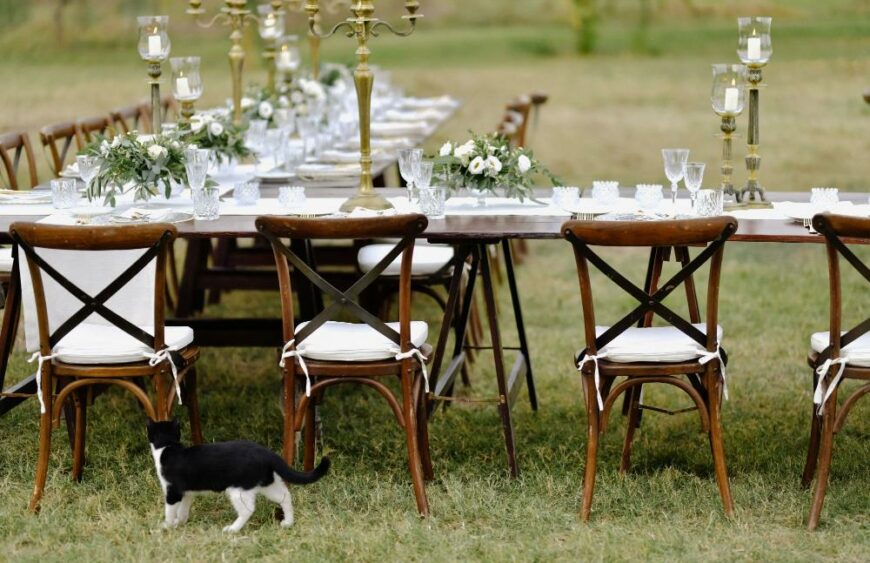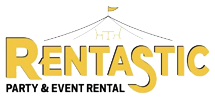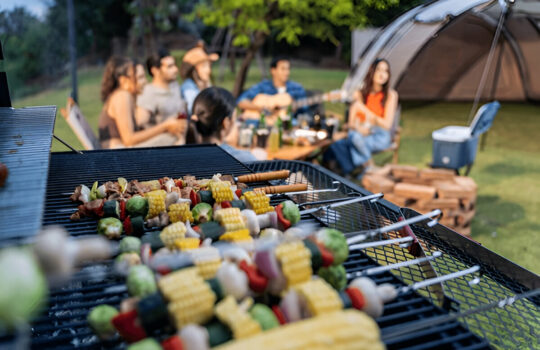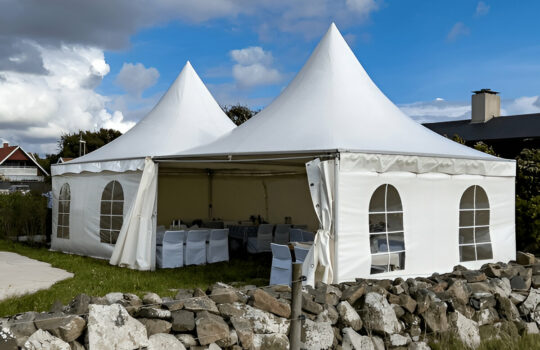Stress-Free Tent Setup and Takedown – What You Need to Know
October 23, 2024 2024-10-23 8:07Stress-Free Tent Setup and Takedown – What You Need to Know

Stress-Free Tent Setup and Takedown – What You Need to Know
Master stress-free tent setup with expert tips and tricks. Your ultimate guide to hassle-free camping adventures!
Stress-Free Tent Setup Tips
For a seamless camping experience, choosing the right tent and knowing how to set it up efficiently can make a significant difference. Let’s explore the setup tips for different types of tents, including dome tents, tunnel tents, and A-frame tents.
Dome Tents
Dome tents are a popular choice due to their ease of setup and versatility. Suitable for various sizes from two-person models to large family-sized tents, dome tents can be pitched quickly with the right instructions. Here are some key points to consider when setting up a dome tent:
-
Size Variation: Dome tents come in various sizes to accommodate different camping needs. Ensure you choose a size that suits the number of campers and gear you plan to accommodate.
-
Simple Setup: Dome tents typically feature a simple setup process with fewer poles to assemble. Follow the manufacturer’s instructions for a hassle-free setup experience.
-
Weather Resistance: While dome tents provide decent weather resistance, make sure to properly stake down the tent and use guylines in windy conditions for added stability.
Tunnel Tents
Tunnel tents share similarities with dome tents but have tent poles running parallel across the ridge of the tent. Here are some tips for setting up a tunnel tent:
-
Wind Considerations: Setting up a tent in strong winds can be challenging. Tunnel tents, with their design allowing staking out the tent before inserting poles, can facilitate setup in windy conditions [2]. Ensure to stake the tent securely to prevent shifting in windy weather.
-
Proper Alignment: Ensure the tent poles are inserted correctly into their corresponding sleeves and that the tent fabric is taut to prevent sagging during inclement weather.
-
Ventilation: Tunnel tents often provide good ventilation due to their design, but it’s essential to adjust vents as needed for optimal airflow and comfort inside the tent.
A-Frame Tents
A-frame tents, though less common nowadays, are favored by some backpackers for their compact design. However, they can be trickier to set up compared to dome or tunnel tents. Here are some setup tips for A-frame tents:
-
Advance Preparation: Before heading out to camp, inspect the A-frame tent for any damage, familiarize yourself with its setup process, and ensure all necessary components are included in your camping gear.
-
Location Selection: To avoid potential damage to the tent, choose a flat and clear camping spot that is free from rocks, branches, or other obstacles that could puncture the tent floor or fabric.
-
Stability Measures: A-frame tents may require additional stabilization in windy conditions. Use extra stakes and guylines to secure the tent firmly to the ground and prevent the structure from swaying or collapsing.
By following these stress-free tent setup tips for dome, tunnel, and A-frame tents, campers can enjoy a smooth and hassle-free camping experience in the great outdoors. Remember to practice setting up your tent before your trip and always prioritize safety and proper tent maintenance for a pleasant camping adventure.
Preparing the Campsite
Setting up your campsite correctly is essential for a smooth and enjoyable outdoor experience. To ensure a stress-free tent setup and takedown, it’s crucial to pay attention to ideal tent placement, ground cloth use, and weather considerations.
Ideal Tent Placement
Selecting the right location for pitching your tent is paramount. When choosing a spot, aim for higher ground or a knoll to prevent water accumulation in case of rain. Additionally, avoid setting up your tent under trees with low-hanging branches that could pose a risk of falling. It’s also advisable to clear the ground beneath the tent from sticks, stones, and debris to create a comfortable sleeping surface.
Ground Cloth Use
Using a ground tarp beneath your tent is a smart practice to prevent moisture seepage and improve insulation, especially during colder nights. Be sure that the ground tarp covers the entire bottom area of your tent to provide maximum protection against dampness and cold.
Weather Considerations
Considering weather conditions when pitching your tent is crucial for a comfortable camping experience. As mentioned earlier, opting for higher ground can help prevent water accumulation. Additionally, ensure your tent is securely staked down and that all guylines are properly tensioned to withstand windy conditions. Being mindful of the weather forecast and preparing accordingly can make a significant difference in your camping enjoyment and safety.
Efficient Campsite Planning
Efficient campsite planning is crucial for a successful outdoor adventure, ensuring a stress-free tent setup and optimizing the camping experience. By implementing essential checklists, embracing safety measures, and focusing on campsite layout optimization, campers can elevate their camping experience and enjoy the great outdoors to the fullest.
Essential Checklists
Creating a comprehensive checklist of essential items is the cornerstone of efficient campsite planning. Prior to embarking on a camping trip, campers should meticulously plan and prepare by ensuring they have all the necessary equipment, gear, and supplies. This includes items such as tents, sleeping bags, cooking utensils, lighting sources, first aid kits, and personal items. By following a detailed checklist, campers can avoid overlooking important essentials and streamline the setup process.
Safety Measures
Safety should always be a top priority when planning a campsite. Integrating safety measures into the planning process is vital to prevent accidents and ensure a secure camping environment. Campers should familiarize themselves with basic safety protocols, such as proper fire handling, wildlife precautions, and emergency procedures. Additionally, having a clear communication plan and designated meeting points can enhance overall safety during the camping trip.
Campsite Layout Optimization
Optimizing the campsite layout plays a significant role in enhancing the overall camping experience. When selecting a tent placement, campers should consider factors such as comfort, privacy, proximity to amenities, and adherence to campground regulations. By strategically arranging tents, cooking areas, and communal spaces, campers can create a functional and organized campsite that promotes efficiency and convenience.
Efficient campsite planning not only streamlines the tent setup and takedown process but also contributes to a memorable and enjoyable outdoor adventure. By following essential checklists, prioritizing safety measures, and optimizing the campsite layout, campers in New York can ensure a seamless and stress-free camping experience. For more insights on tent rentals and event planning, refer to our in-depth guide on tent rentals: a complete guide for epic events.
Tent Maintenance Tips
Proper maintenance of your tent is essential to ensure it remains in good condition for your outdoor adventures. This section will cover key tent maintenance tips, including pre-trip inspection, cleaning and storage, and zipper care.
Pre-Trip Inspection
Before embarking on your camping trip, it is crucial to conduct a thorough pre-trip inspection of your tent. This inspection helps to identify any potential issues, such as damages or malfunctions, before you reach your campsite. One common issue to watch out for is a faulty zipper. To avoid unpleasant surprises upon arrival, check the zipper functionality during the pre-trip inspection.
Cleaning and Storage
After each camping adventure, make it a habit to clean your tent to remove dirt, debris, and any stains accumulated during use. Proper cleaning not only maintains the appearance of your tent but also helps extend its longevity and performance. Ensure the tent is completely dry before storing it to prevent mold and mildew growth. Additionally, applying a lubricant to the zipper can help prolong its life and ensure smooth operation [6].
Zipper Care
The zipper plays a critical role in the functionality of your tent, enabling easy access and closure. To care for the zipper, avoid forcing it when stuck and handle it gently to prevent damage. Regularly lubricating the zipper with a suitable product can help maintain its smooth operation and prevent it from getting stuck. Proper zipper care is essential to ensure seamless setup and takedown of your tent during camping trips.
By following these tent maintenance tips, you can prolong the life of your tent and enjoy stress-free camping experiences. Proper care and maintenance not only ensure the functionality of your tent but also contribute to a comfortable and enjoyable outdoor adventure. For more tips on enhancing your camping experience, check out our article on tent rentals: a complete guide for epic events.
Setting Up Tent Like a Pro
When it comes to ensuring a stress-free tent setup and takedown, mastering the art of pitching your tent is essential. Let’s explore three key elements that can help you set up your tent like a pro: ground tarp usage, location selection, and practice and preparation.
Ground Tarp Usage
Using a ground tarp or footprint beneath your tent is crucial for protecting the tent floor from abrasions, moisture, and sharp objects. A ground tarp acts as a barrier between the tent bottom and the ground, extending the lifespan of your tent floor. It’s recommended to choose a ground tarp that matches the size and shape of your tent to provide maximum coverage.
By creating a moisture barrier, the ground tarp helps prevent water infiltration, keeping you dry and comfortable during your camping experience. Additionally, it aids in insulation, offering an extra layer of protection against the cold ground.
Location Selection
Selecting the ideal location for pitching your tent is crucial for a successful camping trip. Look for a level, dry, and spacious area to ensure maximum comfort and stability. Avoid setting up your tent in low-lying areas prone to collecting water, as this can lead to a damp and uncomfortable camping experience.
When choosing a location for your tent, consider factors such as proximity to water sources, natural wind barriers, and access to amenities like restrooms and cooking areas. By carefully selecting your campsite, you can create a comfortable and enjoyable outdoor living space.
Practice and Preparation
Practice makes perfect when it comes to setting up your tent efficiently. Before embarking on your camping trip, take the time to familiarize yourself with your tent’s components and setup process. Practice setting up your tent at home to ensure that you can pitch it quickly and correctly when you arrive at your campsite.
Additionally, preparing for various scenarios and environmental conditions can help you handle unexpected challenges. Advanced tips and tricks for setting up your camping tent include weatherproofing your setup, maximizing space and comfort, and being ready for emergency repairs. By practicing and preparing thoroughly, you can set up your tent like a pro and enjoy a seamless camping experience in any environment.
Mastering the art of ground tarp usage, location selection, and practice and preparation will enhance your camping adventures and make tent setup a stress-free and efficient process. By honing these skills, you can ensure a comfortable and enjoyable outdoor experience, whether you’re camping in your backyard or exploring the great outdoors.
Tent Setup Challenges
Despite the joys of camping, setting up a tent can present various challenges that campers need to address for a smooth experience. This section focuses on key challenges encountered during tent setup, including weatherproofing, space maximization, and emergency repairs.
Weatherproofing
Ensuring your tent is weatherproof is essential for a comfortable camping experience. Advanced tips and tricks for setting up a camping tent in diverse environments emphasize the importance of weatherproofing to enhance comfort and safety. To weatherproof your tent effectively, consider the following:
- Apply seam sealer to prevent water from seeping through seams.
- Use a ground tarp under your tent to protect against moisture seepage and help retain warmth.
- Ensure the rainfly is securely attached to provide adequate protection from rain and wind.
- Check for proper ventilation to prevent condensation buildup inside the tent.
- Stake down the tent and adjust guylines to enhance stability during windy conditions.
Space Maximization
Optimizing space within your tent is key to a comfortable camping experience, especially when dealing with limited square footage. To maximize space within your tent, consider the following tips:
- Use storage organizers or hanging pockets to keep personal items off the floor and organized.
- Utilize vertical space by hanging a lantern from the tent ceiling or using collapsible gear that can be stored overhead when not in use.
- Choose a tent layout that promotes efficiency and accessibility to essentials such as sleeping bags and camping gear.
- Keep pathways clear to allow easy movement within the tent, especially during the night.
Emergency Repairs
Being prepared for emergency repairs while camping is crucial to address unexpected issues that may arise during your outdoor adventure. To ensure you are equipped to handle emergency repairs, consider the following:
- Pack a repair kit that includes essentials like duct tape, patching material for the tent, and extra guylines.
- Familiarize yourself with basic repair techniques for common tent issues like seam tears, zipper malfunctions, and pole damage.
- Prioritize safety by addressing emergency repairs promptly to prevent further damage to your tent.
- Practice setting up a temporary shelter in case your tent becomes unusable during your camping trip.
By proactively addressing weatherproofing, maximizing space, and preparing for emergency repairs, you can overcome common challenges associated with tent setup and enjoy a stress-free camping experience in various outdoor settings.
Ensuring Tent Stability
For a stress-free tent setup and takedown, ensuring the stability of your tent is paramount. Effective measures such as guylines, stake pullouts, and setup strategies play a crucial role in maintaining the structural integrity of your tent, especially in challenging weather conditions.
Guylines Importance
In challenging weather conditions, such as strong winds, upper guylines significantly enhance the stability and strength of freestanding tents. A lack of, or insufficient, guylines can lead to tent failures, as seen in Landmannalauger, Iceland, during a storm with winds measuring at 42.8 kt (49 mph). Well-guyed tents, anchoring the guylines properly, were the ones that managed to withstand the wind and keep the interior dry. Understanding the importance of guylines and properly adjusting them can make a significant difference in the stability of your tent.
Stake Pullouts
Stake pullouts are a common cause of catastrophic tent failures in windy conditions. It is crucial to use the correct type of stake for different terrains and ensure the tent is properly anchored. Techniques like deadman/big-rock-little rock and double or triple pegging are effective in securing the tent firmly in place, especially in adverse weather. Being proactive and flexible in decision-making, understanding personal limits, and terrain, are all key factors in successfully anchoring your tent to withstand challenging conditions.
Setup Strategies
Practice makes perfect when it comes to setting up your tent in challenging conditions. Before embarking on your trip, it is highly recommended to practice setting up the tent in conditions similar to those you may encounter during your camping experience. Opting for tents with fly-first or all-in-one integral pitch options is advised for cold and wet climates, as they prevent the inner tent from getting wet during setup. Certain tent designs, like tunnel tents, allow for staking out the tent before inserting poles, facilitating setup in high winds.
By understanding the importance of guylines, stake pullouts, and effective setup strategies, you can enhance the stability of your tent and enjoy a stress-free camping experience. Proper preparation, practice, and adherence to safety guidelines are key to ensuring your tent remains secure and comfortable in any weather conditions. For further tent stability tips and accessories, visit our article on tent-and-table-net.
Party Tent Accessories
When it comes to ensuring a hassle-free tent setup and takedown for your party, having the right accessories can make all the difference. Let’s explore three essential party tent accessories: Extra Tent Stakes, Tent Stake Drivers, and Stake Extractors.
Extra Tent Stakes
Extra Tent Stakes are a must-have accessory when setting up party tents, as tent stakes are susceptible to getting lost, damaged, or broken during the setup process. It’s advisable to have additional tent stakes on hand to avoid any setbacks and ensure the stability of your tent.
Having spare tent stakes provides you with peace of mind during your event, knowing that you have the necessary equipment to secure your tent effectively. Whether you encounter hard ground or unexpected challenges, having extra tent stakes ensures that you can confidently anchor your tent in place.
Tent Stake Drivers
Thor Tent Stake Drivers are highly recommended accessories for driving tent stakes into the ground efficiently, particularly in hard ground conditions. These drivers can save you time and physical labor during party tent setups, allowing you to secure the tent stakes quickly and securely [7].
By using a tent stake driver, you can ensure that your tent stakes are properly driven into the ground, providing reliable anchoring for your tent. This tool is especially useful when dealing with challenging soil conditions or when time is of the essence. With a tent stake driver, you can expedite the setup process and focus on other aspects of preparing your party area.
Stake Extractors
Stake extractors are essential tools for quickly removing tent stakes from the ground with minimal physical exertion. These extractors enable you to rapidly disassemble your party tent after the event, facilitating a smooth and efficient takedown process.
When it’s time to pack up your tent, stake extractors come in handy for loosening and pulling out tent stakes effortlessly. This reduces the strain on your hands and arms, making the takedown process more manageable and allowing for quick cleanup and storage. With stake extractors, you can efficiently disassemble your party tent and prepare it for future use.
By incorporating these essential party tent accessories into your setup and takedown routine, you can streamline the process, enhance efficiency, and ensure that your event runs smoothly. With the right tools at your disposal, you can tackle tent setup and takedown with confidence, making your party experience stress-free and enjoyable for all attendees.







